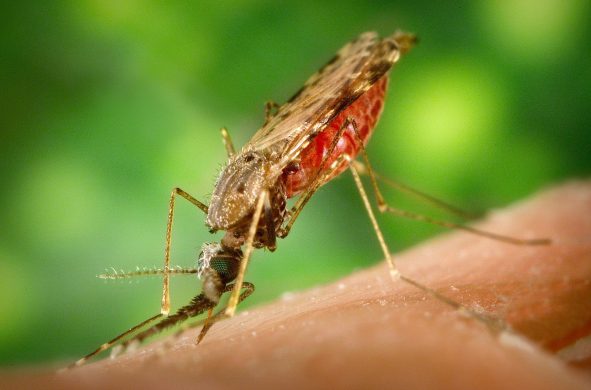MANILA, 6 March, 2017 (SciDev.Net): The malaria parasite Plasmodium falciparum produces a molecule which makes infected humans emit carbon dioxide and other volatile compounds that attract mosquitoes and help them spread the disease more efficiently, a study has found.
The molecule, HMBPP, works by stimulating red blood cells, says Ingrid Faye, researcher at the Department of Molecular Bioscience, Stockholm University (SU) and corresponding author of the study, published in Science this month (February 9).
Faye and other researchers at SU, the Swedish University of Agricultural Science and Sweden’s KTH Royal Institute of Technology, focused their study on Anopheles gambiae. But they believe that other mosquito species react to HMBPP in the same way.
According to Faye if a malaria-infected mosquito bites an individual and that person develops the disease, the resulting infection would cause carbon dioxide and organic compounds aldehydes and monoterpenes to be released from the victim’s skin or breath. The odours “attract uninfected mosquitoes to bite and get the parasites themselves. Those mosquitoes will then carry on the transmission of malaria to another person”.
HMBPP not only attracts mosquitoes but also spur them to eat more blood, enabling the production of greater numbers of parasites, according to the study.
Michael Kanost, professor at the Department of Biochemistry and Molecular Biophysics, Kansas State University, Manhattan, Kansas, says the study is important because it led to “the discovery of a chemical mechanism for the attraction of non-infected A. gambiae mosquitoes to people who already are infected with malaria.”
Kanost believes HMBPP, could be helping the malaria parasite increase transmission within human populations, as non-infected mosquitoes “are more likely to bite infected individuals and obtain the parasite themselves.”















